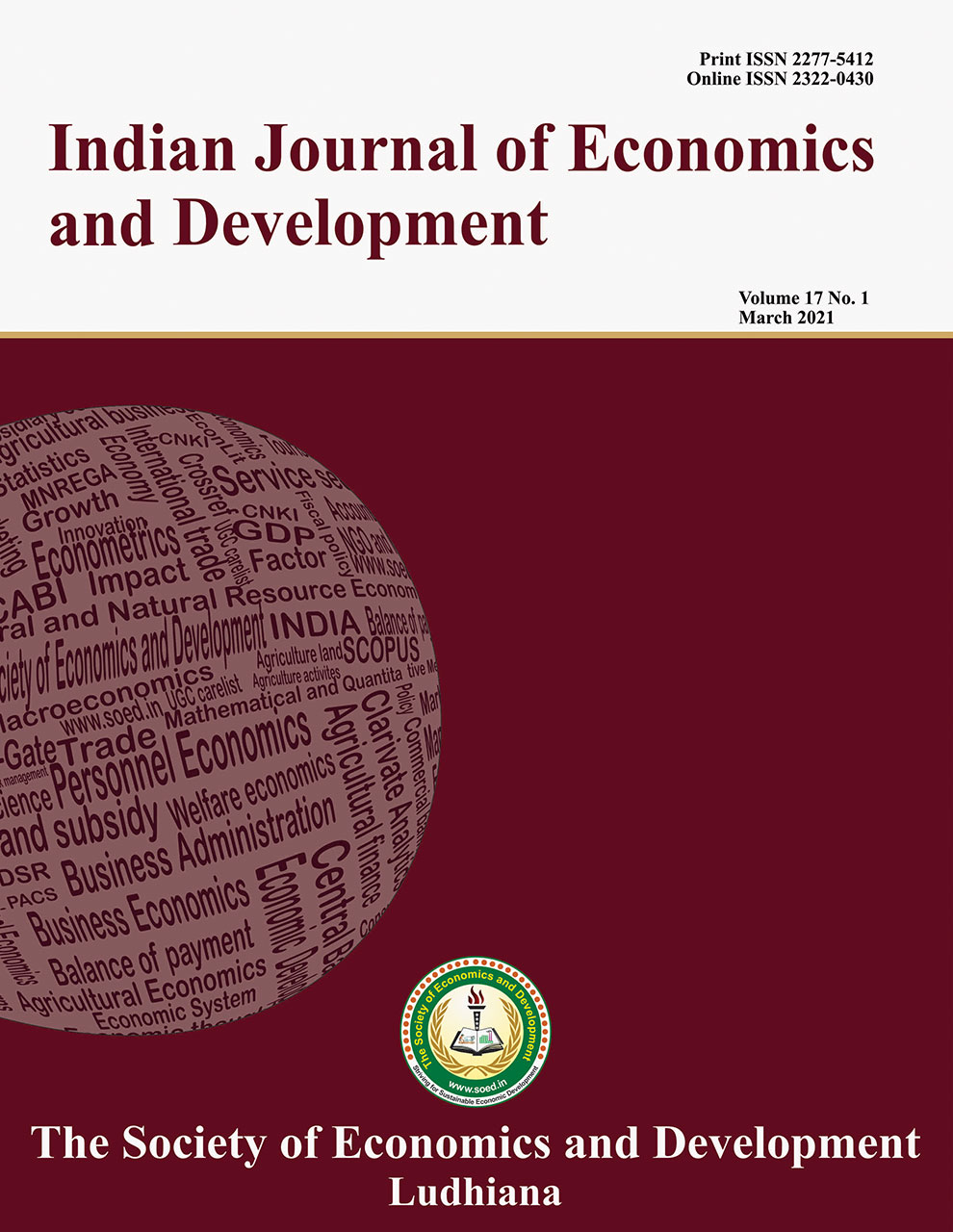An Economic Analysis of Cluster Bean Production in Bikaner District of Rajasthan

Price: ₹ 1000
Author: Vijay Kumar Baldodiya1*, P.K. Awasthi and Yogesh Tiwari
Author Address: Research Associate, IABMI, Anand Agricultural University, Anand-388110 (Gujarat) and 2Professor and Ph.D. Student Department of Agricultural Economics and Farm Management, College of Agriculture, Jawaharlal Nehru Krishi Vishwa Vidyalaya, Jabalpur-482004 (
Keywords: Break-even, cluster bean, returns.
JEL Codes: C81, C83, D61, D83, M11, Q12.
Abstract
Cluster Bean (Cyamopsis tetragonoloba L. Taub) commonly known as is a drought and high temperature tolerant Cyamopsis tetragonoloba Guar, deep-rooted summer annual legume crop cultivated mainly in the Kharif season in an arid region and used as animal feed, fodder, green manure and extraction of gum for industrial uses. India is the largest producer of cluster bean and contributes 80 percent of total cluster bean production in the world. Rajasthan is the single largest producer and alone contributed to more than 70 percent of India’s total output. The increased demand for guar gum resulted in a strong escalation of the prices of cluster bean. Looking at the agricultural and industrial importance of this marginalized crop in Rajasthan, particularly realizing the potential in Bikaner district of the state, the present study attempted to analyze the present scenario of the production of cluster bean crops in Bikaner district of the state. A return per rupee invested in cluster bean crop was higher in the small farm (1:1.38) and marginally lowers on the medium farm (1:1.35). Break-even guar production ranged between 4.26 to 5.19 q per ha in small farm, 4.16 to 4.99 q per ha in medium and 3.98 to 4.94 q per ha on a large farm.
Description
Indian Journal of Economics and Development
Volume 16 No. SS, 2020, 1-6
DOI: https://doi.org/10.35716/ijed/NS20-042
Indexed in Clarivate Analytics (ESCI) of WoS
NAAS Score: 4.82
UGC Approved: UGC Care List Group II
Vijay Kumar Baldodiya1*, P.K. Awasthi and Yogesh Tiwari
Research Associate, IABMI, Anand Agricultural University, Anand-388110 (Gujarat) and 2Professor and Ph.D. Student
Department of Agricultural Economics and Farm Management, College of Agriculture, Jawaharlal Nehru Krishi Vishwa
Vidyalaya, Jabalpur-482004 (Madhya Pradesh)
*Corresponding author’s email: vj071088@gmail.com



